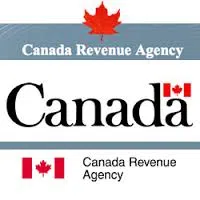
As it has been said many times before, 2020 was an unprecedented year that proved to be turbulent and unforgiving. But while the calendar year may have ended, you cannot forget about 2020 just yet.
With the deadline to file your 2020 taxes looming, there are many significant additions and updates to this tax year that you will have to keep in mind.
With the help of Jeff Lansing, a spokesperson for the Canada Revenue Agency, we aimed to address topics that had the most significance.
Emergency Benefits
In the early stages of Covid-19, Canada’s unemployment rate peaked at 13.7%. To offset the loss of income that many Canadians were facing, the Canadian government rolled out benefits such as CERB and CESB.
Recipients of these benefits will have them filed as taxable income and will receive a T4A or a T4E.
“Individuals who received these may owe taxes when filing their personal income tax and benefit returns,” says Lansing.
Because no tax was withheld from these payments, the amount owed, if any, will be dependent on the individual’s situation.
Relief Measures
While parts of the country have seen some economic recovery, many Canadians are still in an unfavourable financial situation and as a result, the CRA has altered their procedures to avoid debt from feeling like an avalanche.
“If you cannot pay an existing debt in full, then you might be able to make a payment arrangement,” says Lansing.
He adds they’ve expanded the parameters that allow them to create flexible payment arrangements to facilitate for people that are struggling.
In addition, recipients of the aforementioned emergency benefits will also see alterations to their payments.
“Once eligible individuals have filed their 2020 income tax benefit returns, they will not be required to pay interest on any outstanding income tax debt from the 2020 tax year until April 30th, 2022,” says the CRA spokesperson.
Home Office Tax Credit
A large portion of the workforce that was employed still saw their lives change drastically with a transition to working from home.
In the past, you would have been forced to do calculations that include square footage.
However, due to the increase in people that will be eligible, the CRA introduced a new flat-rate method to ease the process.
“It allows employees who worked more than 50% of the time from home for a period of at least four consecutive weeks due to COVID-19 to calculate their home office expenses using a flat rate method of $2 for each day they worked from home,” says Lansing.
Now whether your office included a desk and a bookshelf or a couch and a foldable tv stand, so long as you meet the date and time requirements, you will be eligible for the Work from Home Tax Credit.
Lansing believes that the new temporary method will also help employers avoid having to approve hundreds of forms that certify their employee is working from home.
Tax Clinics
For over 50 years, volunteer-run clinics called the Community Volunteer Income Tax Program have been organized with the assistance of the CRA.
They allow individuals with a modest income and a simple tax return to have their taxes done for them free of charge.
Last year with COVID-19 beginning to impact Canada at the start of tax season, a move to virtual clinics included some issues, but Lansing says this year they are prepared.
“We’re offering free virtual income tax clinics to help taxpayers pay their taxes, and because it is virtual, we’re following those physical distance guidelines.”
This year a simple tax return will also include someone who has received an emergency benefit.
Participants of the clinic will be able to do so through a video conference, a phone call or document drop-off.
Filing Electronically
This year amid ongoing difficulties with mailing, Canadians are being encouraged to file their tax returns electronically.
There is also an option to choose a direct deposit for any tax refund you may receive rather than wait for a cheque in the mail.
Paper files will still be accepted. Users of this method are urged to do so sooner rather than later to ensure their taxes are filed on time.
Scams
Despite the misfortunes that some Canadians have been plagued with, schemes that target vulnerable individuals are still prevalent, with CRA scams being amongst the most popular.
Less than a month ago, CRA locked over 800,000 taxpayers out of their CRA accounts due to compromised usernames and passwords.
To avoid being taken advantage of, the following are things the CRA will NOT do:
- Send an email with a link that asks for personal or financial information
- Ask for any personal or financial information through text message
- Ask to be paid by prepaid credit cards, gift cards or cryptocurrencies
Lansing says that there is one way to identify someone who does not work for the CRA.
“The most important thing to know is we will never use aggressive language or threaten you with arrests or by sending the police to your house.”
Deadlines
Unlike last year it appears that the usual tax deadline will apply. Income tax and benefit returns are due on April 30, 2021, and the deadline to pay any balances is the same time.
Self-employed individuals and their spouses or common-law partners have until June 15, 2021, to file their returns.


